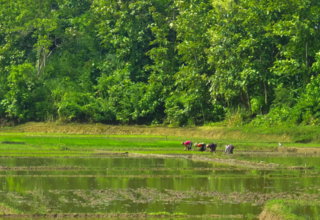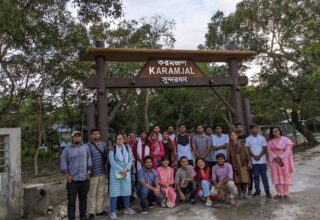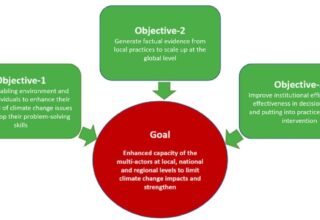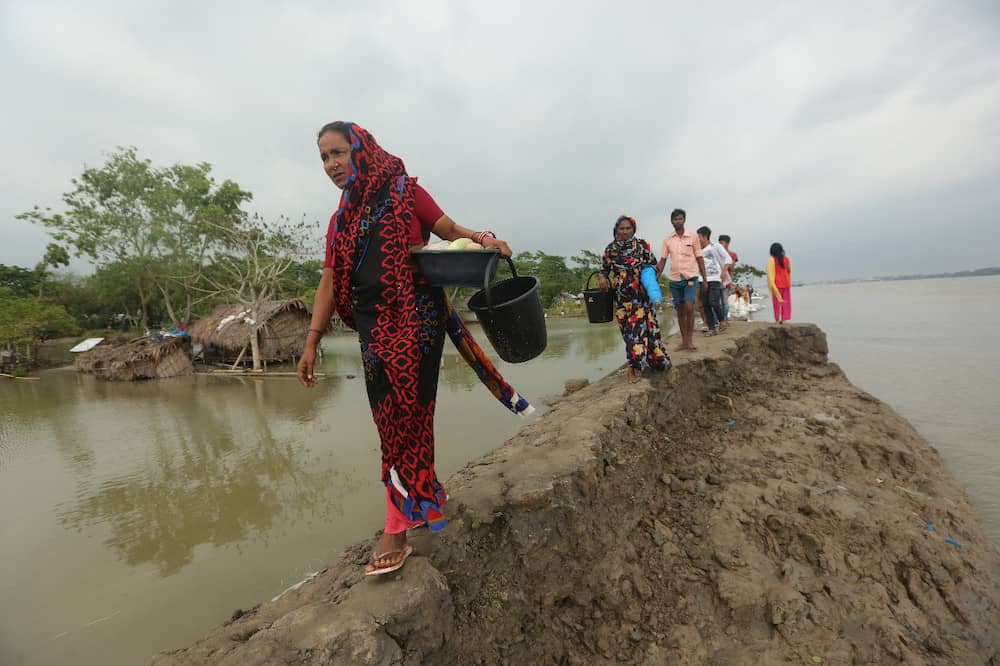
According to the IPCC 6th assessment report, maladaptation refers to actions that may lead to increased risk of adverse climate-related outcomes, including via increased greenhouse gas emissions, increased or shifted vulnerability to climate change, more inequitable outcomes, or diminished welfare, now or in the future. Most often, maladaptation is an unintended consequence. Maladaptive responses to climate change can create lock-ins of vulnerability, exposure and risks that are difficult and expensive to change and exacerbate existing inequalities.
IPCC WGII 6th Assessment Report strongly states that adaptation is one of the most essential ways to combat global climate change. However, with adaptation, the question is not anymore about whether we need to adapt but rather how we actually do it in practice in a way that increases people’s well-being and capacity. WGII highlighted multiple examples where use of similar tools and strategies can improve conditions in one region, while diminishing welfare in another region. Factors that can negatively impact on adaptation outcomes are uncertainty and potential path-dependency of decisions that may result in lock-in and maladaptation in the long-term. Additionally, policies and adaptation practices are often focused on short timeframes; what is successful in the near-term is not necessarily successful in the long-term.
One of the most popular and widely used coastal adaptation techniques is afforestation of naturally un-forested lands. Afforestation can generate carbon storage, work as ecosystem based adaptation, and provide multiple ecosystem services at the same time; yet a risk of maladaptation is often associated with such adaptation practices. Research has highlighted that introducing plantations in areas which would not naturally support forests, including savannas, natural grasslands and temperate peatlands, or replacing native tropical forests on peat soils, have destroyed local biodiversity and lead to multiple problems, including water supply scarcity, lack of food supply, fire risk and increases in greenhouse gas emissions. In Cambodia, for example, government adaptation strategies have focused on reforestation and conservation measures that in turn have eroded/reduced local biodiversity.
Grey infrastructure and energy intensive market led urbanization, once considered as a predominant adaptation technique, has now been listed as maladaptation practice. As such techniques often disintegrate ecological and social approaches from the plan and result in short-term benefits only, further exacerbating health, ecological and social vulnerability in marginalized communities. Seawalls are one such example; although they effectively reduce flood impacts to people and assets immediately, they can result in lock-ins and increase exposure to climate risks if not integrated into a long-term adaptive plan. Further, specific engineering solutions that might be introduced from other localities without proper contextual adjustments may lead to maladaptation. Likewise, in climate vulnerable communities, livelihood diversification through male-out migration increases burden on women. Hence, a lack of gender-sensitive analysis before implementing water management projects can lead to maladaptation and increase gender vulnerability.
Examples of maladaptation are visible all over the world, such as in Navarre, Spain, an irrigation project was launched which resulted in many small-scale producers not being able to afford such methods and lost access to communal water rights. Thus, many of the farmers had to sell or rent their lands and look for alternative options. This project increased inequality, land concentration and lowered crop diversity in Navarre, putting the poor at higher risk.
Other maladaptation examples from the agriculture sector include, poor farmers selling firewood for charcoal production as livelihood diversification in Ghana. This shift towards firewood is particularly noticed as failure of crop yield during severe droughts, as frequency of rainfall decreases in Ghana due to climate change. Farmers have also tried intensification of pasture use as a coping response to climate-induced drought; nevertheless, this ended up increasing risks to livestock reproduction and human life expectancy due to overgrazing; further suggesting, responses to green vulnerability can cross tolerance limits for animals, humans, and food available for foraging. Similarly, in Ethiopia, efforts of adaptation programs to droughts contribute to current unsustainable development trajectories among pastoralist communities, resulting in charcoal production, overgrazing, migration and conflict with other groups and marginalization of livelihood.
Climate and environmental policies often lack assessment, multi-level stakeholder involvement, and ground level research which can exacerbate climate vulnerability. In Central America, such lack of assessments led to unsustainable trajectory to local communities and increased risks to maladaptation, as climate variability on crop yield coupled with autonomous local adaptation practices, without any prior involvement of relevant stakeholders. Bangladesh, a flood-prone country, led national and regional-level adaptation plans that resulted in maladaptation, as local poverty context and uncertainties of properties were not carefully considered and disconnected from local autonomous practice. Previously constructed earthen flood control embankments for protecting lives and livelihood of vulnerable communities have failed miserably in Bangladesh, and had rather brought new problems. Studies have effectively pointed to an increase in siltation on floodplains and river beds, creating risky situations for the population within the boundary of embankments. Research also highlights that in future if the country invests in Coastal Climate-Resilient Infrastructure Projects, chances of potential increase in vulnerability of the poor will be associated with it; based on the current cost benefit analysis of previously constructed coastal infrastructure. To avoid such maladaptation practices the country must consider relevant environmental and social impacts associated with embankments in future for long-term.
Likewise, the Indian government initiated multiple policies to adapt to the agriculture sector with the changing climate. Such policies invested in infrastructure, export production, and synthetic input have undoubtedly set the development pathways but have closed the adaptive options. Albeit their contribution towards increased national food production, such policies have failed to address high levels of malnutrition, worsen regional inequalities, degraded natural resources and led to an agrarian debt.
Nevertheless, maladaptation can be avoided through a focus on building adaptive capacity, community-based management, addressing the drivers of vulnerability and site-specific measures. Cost-benefit analysis should be a prerequisite in adaptation projects to better allocate scarce resources by local and regional decision makers. Additionally, many papers have cited nature-based solutions; chances of maladaptation can be reduced by recognition of land rights and cooperation with Indigenous peoples and local communities who depend on forest resources. Considering the potential unintended consequences of adaptation projects and programs in the planning and design phase can help to reduce maladaptation.
Timely actions that keep options open ensure benefits in multiple sectors and systems, and indicate the available solution space for adapting to long-term climate change, will benefit all. Scientists also suggest integrating adaptation with development as this helps to reduce lock-ins and creates opportunities for more integrated approaches. Compiling existing scientific and local knowledge on the relationships between forest, land cover/use, and hydrological services, is a gap to be filled, in a broader perspective in the region that can contribute to provide recommendations and inform restoration practices and policies. Also, there is a gap of knowledge about financing of climate change adaptation which must be addressed globally. In retrospect, success of adaptation and maladaptation form the ends of a continuum that represents the balancing of synergies and trade-offs across regions, populations, and sectors.
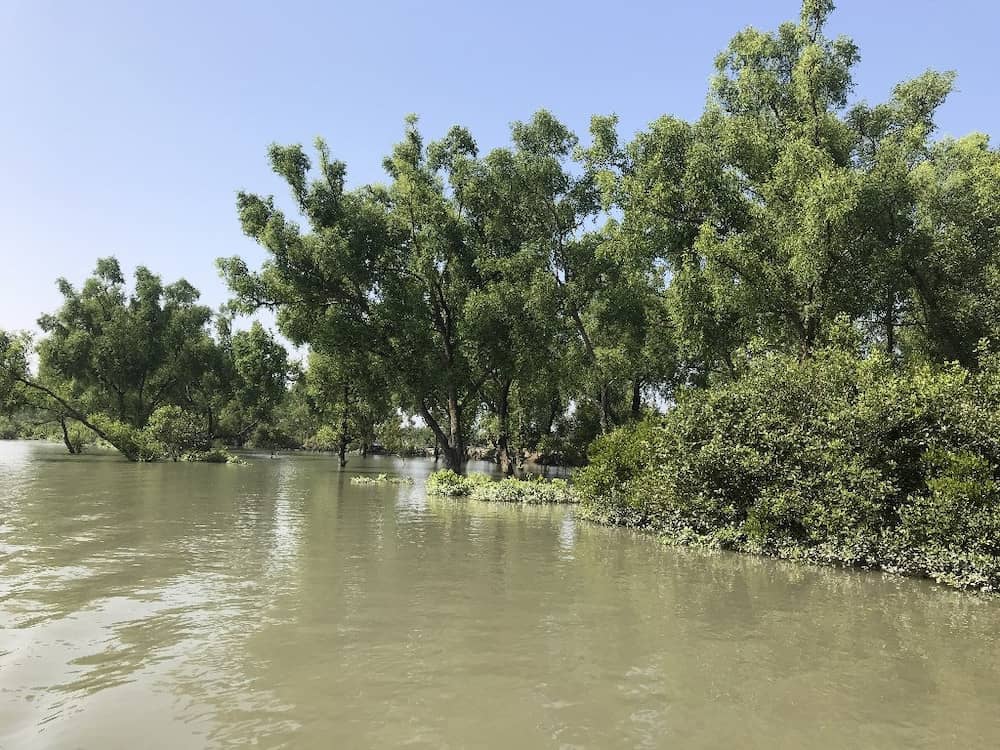
Originally this article was published on August 25, 2022 at Dhaka Tribune.
Authors Bio:
Md. Bodrud-doza Zion is working in the International Centre for Climate Change and Development as Operations and Business Development Manager. His research interest lies in agriculture, water security, environmental pollution and health, climate change adaptation, and socio-economic aspects of Covid-19, and can be reached at bodrud.doza@icccad.org.
Khandker Tarin Tahsin is working in the International Centre for Climate Change and Development as a junior research officer, her research interest lies in climate change adaptation, climate finance, governance and climate change induced migration, and can be reached at khandker.tahsin@icccad.org.




